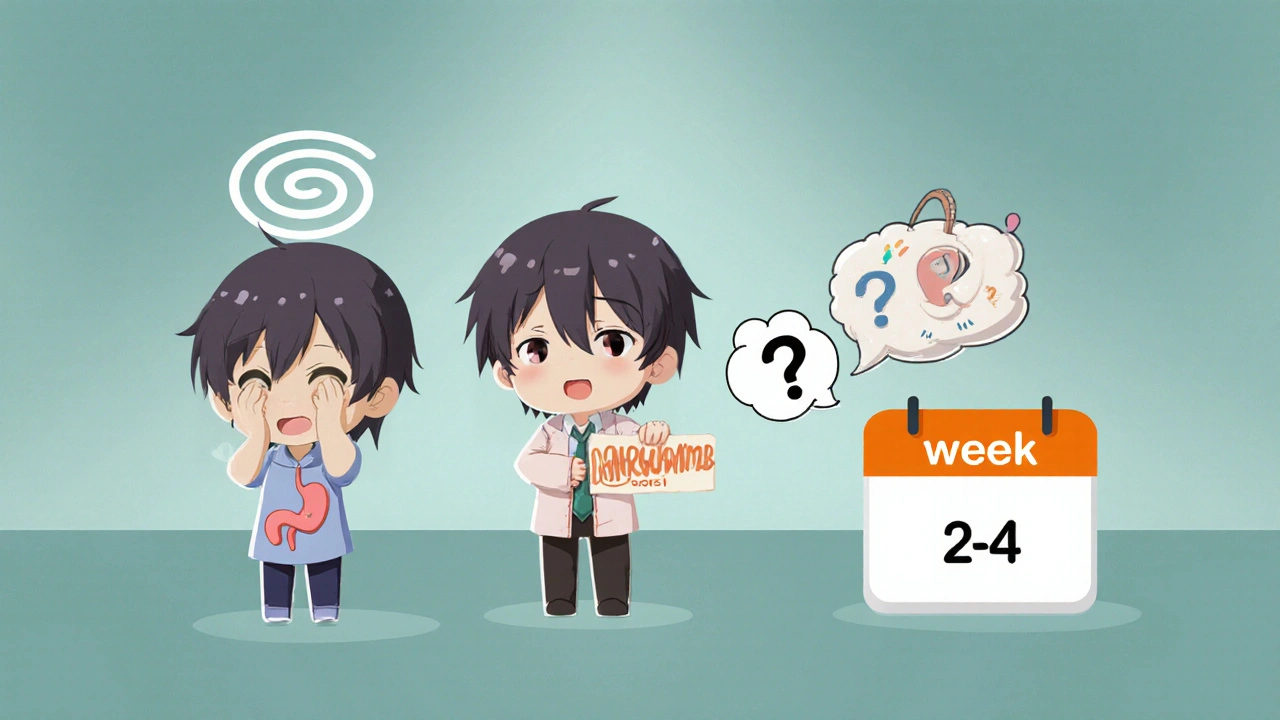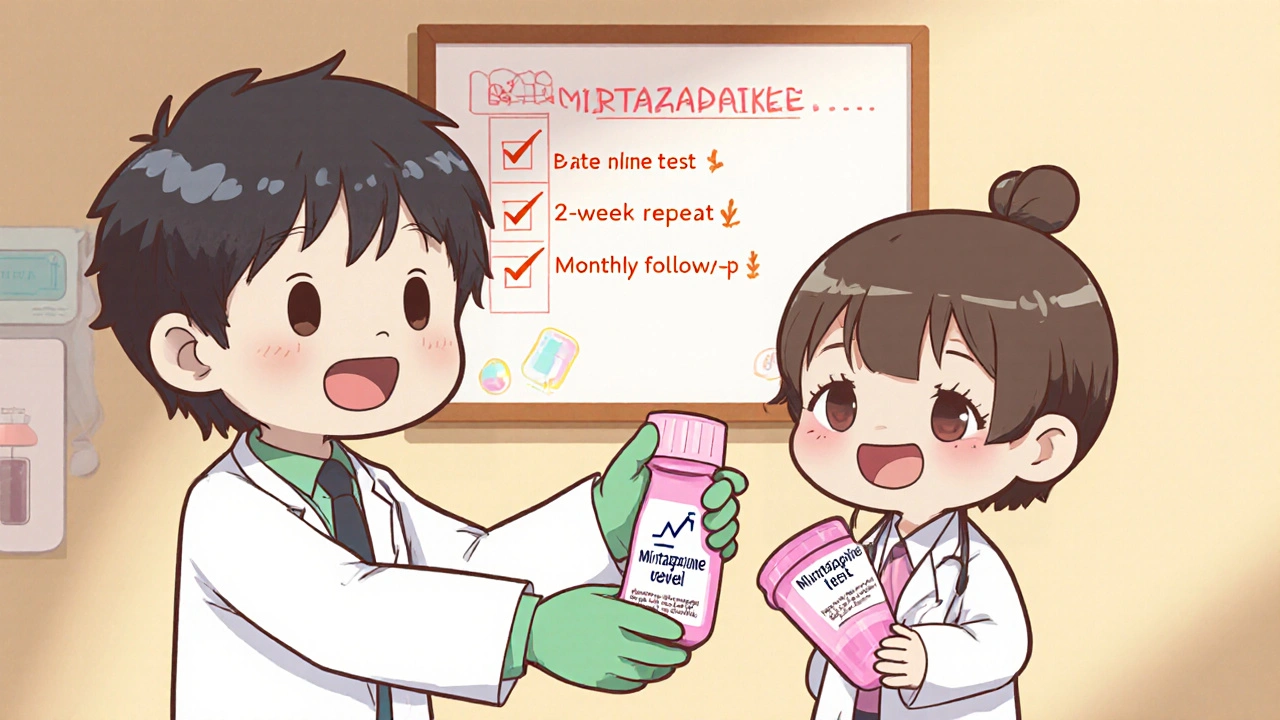Understanding SSRI‑Induced Hyponatremia: Low Sodium and Confusion Risk
24 Oct, 2025SSRI Hyponatremia Risk Calculator
Personal Risk Assessment
Low sodium caused by antidepressants isn’t a rare footnote - it’s a genuine danger that can turn a routine prescription into a medical emergency, especially for older adults. This guide explains why SSRIs can drop your serum sodium, what signs to watch for, and how to keep the confusion away.
Quick Takeaways
- Hyponatremia (serum Na < 135 mmol/L) occurs in 1.9‑4.4% of all SSRI users; the rate jumps to 13‑18% for patients over 65.
- The condition typically appears 2‑4 weeks after starting or increasing an SSRI dose.
- Early symptoms are subtle - nausea, fatigue, mild confusion - but can quickly progress to seizures or coma when Na falls below 125 mmol/L.
- Baseline sodium testing and repeat testing at 2 weeks are now standard for anyone >65 yrs or on diuretics.
- When risk is high, consider mirtazapine or bupropion as safer alternatives.
Selective serotonin reuptake inhibitors (SSRIs) are a class of antidepressants that increase serotonin levels in the brain by blocking its reabsorption - The Sodium Connection
SSRIs trigger the release of antidiuretic hormone (ADH) from the hypothalamus. More ADH means the kidneys retain water, diluting sodium in the bloodstream - a classic case of the syndrome of inappropriate antidiuretic hormone secretion (SIADH). Studies like Nagashima et al. 2021 show a direct link between an SSRI’s binding affinity for the serotonin transporter (SERT) and the magnitude of sodium drop. In plain terms, the stronger the serotonin boost, the higher the chance your sodium will slip.
Hyponatremia is defined as a serum sodium concentration below 135 mmol/L and is the most common electrolyte disturbance linked to psychiatric drugs - Who Gets It?
The risk profile is not uniform. Age is the biggest driver: patients 65 years and older face a three‑to‑four‑fold increase (relative risk ≈ 3.7). Women make up roughly two‑thirds of reported cases, likely because they are prescribed higher‑dose SSRIs more often. Other red flags include:
- Low body weight (< 60 kg)
- Pre‑existing kidney impairment (eGFR < 60 mL/min/1.73 m²)
- Concurrent thiazide diuretics (risk ↑ 4.2‑fold)
- Rapid dose escalation or high initial dose
In a 2024 European Psychiatry meta‑analysis, the pooled incidence for all SSRI users was 2‑4%, but for the high‑risk subgroup it rose to 14‑19%.
Spotting the Early Warning Signs
Because the initial presentation often mimics aging or other chronic conditions, clinicians and patients need a checklist of the first clues:
- Unexplained fatigue or malaise
- Headache that doesn’t respond to usual analgesics
- Nausea or loss of appetite
- Subtle disorientation - “I can’t find my way home”
- Muscle cramps or weakness
If any of these appear within a month of starting an SSRI, order a serum sodium test ASAP.

Diagnostic Criteria - What Labs Tell You
According to ASCPT 2023 guidelines, a diagnosis rests on three pillars:
- Serum sodium < 135 mmol/L (often 120‑130 mmol/L in mild cases)
- Euvolemic status on physical exam (no edema, normal skin turgor)
- Urine sodium > 30 mmol/L and urine osmolality > 100 mOsm/kg
These measurements help differentiate SIADH from other causes like heart failure or liver disease.
Prevention & Monitoring Protocols
Evidence‑based practice now recommends a three‑step monitoring plan for high‑risk patients:
- Baseline test: Draw sodium within 7 days before the first SSRI dose.
- Early follow‑up: Repeat at 2 weeks post‑initiation or after any dose increase.
- Ongoing surveillance: For those > 65 yrs, on diuretics, or with prior hyponatremia, test monthly for the first 3 months, then quarterly for the first year.
Patient education is a must. A 2023 Carlat Report survey found 63% of primary‑care physicians were unaware of the 2‑4‑week onset window, leading to delayed diagnosis. Hand a simple one‑page sheet that lists the symptoms above and the testing schedule.
Treatment Pathway - Mild vs. Severe
Once hyponatremia is confirmed, management depends on severity:
| Severity | Serum Na (mmol/L) | Intervention |
|---|---|---|
| Mild | 125‑134 | Fluid restriction (800‑1000 mL/day) + stop SSRI; sodium usually normalizes in 72‑96 h. |
| Moderate | 115‑124 | Same as mild plus oral salt tablets; consider switching to mirtazapine. |
| Severe | < 115 | Hospital admission, hypertonic 3% saline 1‑2 mL/kg/h (max 6‑8 mmol/L rise/24 h), monitor for osmotic demyelination. |
Stopping the offending SSRI is the cornerstone. In most cases, sodium rebounds within 3‑4 days after withdrawal.

Choosing Safer Antidepressants
If a patient has any of the risk factors listed earlier, consider alternatives with a lower hyponatremia footprint. The 2024 meta‑analysis provides clear odds ratios:
| Drug/Class | Odds Ratio (OR) vs. SSRIs |
|---|---|
| Mirtazapine | 0.47 (95% CI 0.32‑0.69) |
| Bupropion | 0.85 (95% CI 0.52‑1.39) |
| SNRIs (venlafaxine) | 1.72 (95% CI 1.03‑2.87) |
| Tricyclic - amitriptyline | 1.94 (95% CI 1.12‑3.36) |
For elderly patients, mirtazapine has become the first‑line recommendation in the American Geriatrics Society Beers Criteria (2023). Bupropion is a useful second choice when an activating antidepressant is needed.
Practical Checklist for Clinicians
- Assess age, renal function, weight, and concurrent diuretics before prescribing.
- Order baseline Na, then schedule a 2‑week repeat.
- Educate patient and caregivers on early symptoms.
- If Na < 130 mmol/L, reduce dose or switch drug immediately.
- Document all lab results in the EMR with alerts for repeat testing.
- For severe cases, activate the hospital rapid‑response protocol for hypertonic saline.
Key Numbers to Remember
- 1.9‑4.4% overall SSRI hyponatremia incidence.
- 13‑18% incidence in patients ≥ 65 years.
- Number needed to harm (NNH) for SSRIs vs. mirtazapine: 82 over a typical treatment course.
- US healthcare cost: $1.27 billion annually (2024).
- Only 28.7% of patients report being warned about this risk before starting therapy.
Frequently Asked Questions
How soon after starting an SSRI can hyponatremia appear?
Most cases surface within 2‑4 weeks, but rare reports show onset as early as 5 days, especially after a rapid dose increase.
Can I restart the same SSRI after sodium normalizes?
Re‑challenge is generally discouraged for high‑risk patients. If a repeat is essential, use the lowest effective dose, add close monitoring, and consider a different SSRI with a lower SERT affinity.
Is fluid restriction safe for elderly patients?
Yes, but keep the restriction to 800‑1000 mL/day and monitor for dehydration, especially if they have comorbidities like heart failure.
What alternative antidepressant has the lowest hyponatremia risk?
Mirtazapine consistently shows the lowest odds ratio (≈ 0.5) and is the preferred choice for patients > 65 years or those on diuretics.
Should I test sodium more often if my patient is on a thiazide diuretic?
Absolutely. Combine the SSRI monitoring schedule with monthly sodium checks for the first three months, then quarterly.
By staying vigilant about the sodium side effect, clinicians can keep the benefits of SSRIs while protecting patients from confusion, falls, and hospital stays. Remember: a simple lab test and a quick symptom check can make all the difference.

Lisa Woodcock
October 24, 2025 AT 23:01When we think about antidepressants, the first thing that comes to mind is mood lift, not sodium depletion.
Yet the connection between SSRIs and low sodium is something many patients overlook.
In my practice I’ve seen seniors stumble into confusion because a routine prescription silently pulled their sodium down.
The brain relies on a delicate balance of electrolytes, and even a modest dip can make thoughts feel foggy.
That fog is often mistaken for aging or a new psychiatric flare, which delays proper care.
A simple baseline sodium test before starting an SSRI can catch the problem early.
Follow‑up testing at two weeks lines up perfectly with the typical 2‑4‑week onset window highlighted in the literature.
For patients over 65, especially those on diuretics, the risk jumps to double‑digit percentages, so vigilance is a duty.
Education is key: telling patients and caregivers to watch for fatigue, mild nausea, or a sudden “I can’t find my way home” moment can save a hospital stay.
I always hand out a one‑page checklist that lists those symptoms in plain language.
If a low sodium result appears, the first step is to pause the SSRI and consider a switch to mirtazapine or bupropion, which carry a lower hyponatremia footprint.
Fluid restriction of about a liter a day and oral salt tablets often normalize levels within three days for mild cases.
In severe cases, rapid correction with hypertonic saline must be done in a monitored setting to avoid osmotic demyelination.
From a cultural standpoint, many older adults rely on family support, so involving loved ones in monitoring can bridge gaps in health literacy.
Bottom line: a couple of lab draws and a quick symptom check keep the benefits of SSRIs while protecting the brain’s chemistry.
Sarah Keller
November 4, 2025 AT 10:06The very act of prescribing a drug that can alter your brain chemistry is a profound moral choice.
When an SSRI silently drains sodium, it betrays the trust between clinician and patient.
We must hold the pharmacological toolbox to a higher standard, especially for vulnerable elders.
Switching to agents with a milder hyponatremic profile is not just clinical, it is an ethical imperative.
Let us champion proactive monitoring as a badge of professional honor.
Only then can we truly claim to heal without harming.
Veronica Appleton
November 13, 2025 AT 05:13That point about ethics resonates strongly and the data on monitoring is solid.
Baseline sodium testing is cheap and saves costs later on.
Switching to mirtazapine or bupropion can be done safely with proper follow‑up.
Clinicians should embed the checklist into the EMR to avoid missing it.
the sagar
November 19, 2025 AT 00:06Big pharma hides the truth about SSRI sodium traps.
Clinton Papenfus
November 30, 2025 AT 13:53It is incumbent upon the prescribing physician to observe the evidence based protocol for sodium surveillance.
Baseline assessment, two‑week re‑evaluation, and subsequent periodic checks constitute a comprehensive strategy.
Neglecting these steps not only contravenes clinical guidelines but also endangers patient welfare.
Implementing a standardized order set within the electronic health record can mitigate oversight.
Such systematic approaches epitomize high‑quality care.